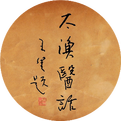What Do Choppy and Slippery Pulses Indicate? | Daily Reading of the Huangdi Neijing [Day 220]
Original Text from the Huangdi Neijing Su Wen · Discussion on the Essentials of Pulse Chapter Seventeen (27) For all abnormal pulses, if the pulse is choppy, it indicates an excess of Yang Qi; if the pulse is slippery, it indicates an excess of Yin Qi; an excess of Yang Qi results in heat without … Read more

![What Do Choppy and Slippery Pulses Indicate? | Daily Reading of the Huangdi Neijing [Day 220]](https://tcmland.com/wp-content/uploads/2025/03/cb01e594-e82c-4474-86af-d1e7f7c7544f.png)






